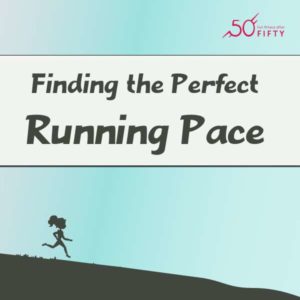Why do people search for the perfect running pace?
People search for their idea of the perfect running pace for different reasons. Here are some that I can think of:
- They want to win a particular race
- They think there is a pace which qualifies them as a real runner
- They think there is a perfect pace they are capable of
- They want to feel the thrill of running faster
- They think they need to always be going as fast as possible
- They don’t want to be seen as slow
- They are searching for efficiency
There is nothing wrong with wanting to win a race, obviously. And I myself love the physical feeling of skimming across the ground as fast as I can. Regarding qualifying as a runner, while there are running snobs, running is a matter of form. A relatively slow run is still a run. Is there such thing as a perfect pace? What is your perfect pace?
Discovering your perfect running pace
The perfect running pace is the pace that you enjoy and are happy with. The problem is that some of us need to learn to be happy with our current capabilities and enjoy the moments. We need better points of evaluation for deciding on and grooving with a certain pace.
Here are my criteria for deciding on my perfect pace for any given day. The last part of that sentence is really important. No one can or should run at the same pace all the time. It can be harmful and it isn’t necessary for improvement.
- Am I enjoying my run?
- Can I think clearly while running?
- What is the terrain like?
- What is the elevation?
- Is it a familiar route?
- What is the distance overall?
- What is the distance compared to my longest runs?
- What has my other recent activity been?
- What other activity is in the near future?
- What injuries am I recovering from or concerned about?
How do you know if you are enjoying your run?
There are different ways and reasons to enjoy a run. You can just be focused on the immediate flow, letting your mind relax and breathing fresh air. This can be enjoyed at almost any pace, although I don’t enjoy speed workouts this way.
You might be enjoying a run because of who you are with or because of being able to run in a particular place. I like to run with my husband, even if it makes me feel slow or he wants to explore places I get lost in. I also enjoy finding new running routes when we go traveling. Sometimes running is a chance to listen to a story or podcast without being distracted.
It is also possible to enjoy a run because of a feeling of accomplishment. It can be an accomplishment just to go out and do something. Maybe it is a step toward a particular goal of distance or race training. Maybe it is a mix of all of the above, but whatever it is, enjoying your run should be an important part of running.
What should you think about while you are running?
It is a fact that the harder you are breathing, the harder it is to think about anything else. You can’t think about where you are going as easily, or sometimes fast enough. You can’t think as clearly about your form, so hopefully you have practiced good form enough at a slower pace.
Any speed that kicks us into anaerobic cell processes is not sustainable for very long. This is probably good because how it limits our thinking can have harmful consequences. That speed will be different for different people. Some people seem to have more efficient aerobic systems. I know my husband has comparatively large lungs. Some people have trained in ways that have built up their aerobic base.
What too many runners don’t realize is that even top level runners don’t always run at their top speeds. This has been a prevalent theme in all running biographies I have read. A large percentage of good training is done at a speed where there can be some conversation. The mind can wander creatively over events and issues, often problem solving much like during sleep. Are you hitting a road block on a project or do you need to think about some important communication? Go for a run and let your brain think about it!
Have you ever run on dirt moguls?
There is a path along the Snake River that my husband likes to take me running or hiking on. Sections of it have undulating, hard-packed miniature mountain ranges. It is very difficult to find a comfortable pace through these sections. Running too fast often results in unexpected landings and hard impact. I run slower through there.
There are many other variations of terrain that affect speed. Loose gravel, tree roots, trail switchbacks, and stream crossings are just a few examples. There is a reason that most official races for speed on are even ground with few turns. Variation in terrain can be very good for building up more muscles and for avoiding the fatigue of repetition, but it usually means slowing down, too. If you don’t slow down on purpose, you will probably end up slowing down with a face plant or skinned knee.
Your perfect pace in such conditions will be one that allows for maneuverability. Similar to my issue with the dirt moguls, you will want to run slower to give yourself reaction time.
Hills will slow you down whether you want to or not. The thing to remember is that unless you are doing a specific, and hopefully relatively short, hill workout, trying too hard on hills is counterproductive. If you are training, give your body time to gradually get stronger. If you are in a race, trying to hard on a hill will deplete your reserves for the rest of the race. There has been many a time during a race where I have passed people after a hill who passed me on the hill.
Understanding elevation
I have come to a new understanding of high elevations in the last couple of years. We discovered that I get significant elevation sickness up around 8000 feet above sea level. That is, I get kind of loopy and go into slow motion.
If you are trying new, higher elevations, give yourself time to figure out how your body will respond. Seriously consider researching what to expect. Even if it is not an elevation to cause the kind of reactions I had, any significantly higher elevation will slow you down. Don’t worry about it. You are still getting some good exercise and can enjoy your run.
Putting distance in perspective
If I am running somewhere unfamiliar, I don’t push the speed. One reason is that I get lost easily. I don’t want to end up somewhere in an exhausted state. Even if you don’t get lost easily, unfamiliar routes frequently end up being longer than expected for various reasons. It is best to save faster runs for familiar paths.
Distance is inversely proportional to overall speed for everyone. No one can run their fastest over their longest distances. Pushing yourself to keep a faster pace than is optimal for a given distance will both decrease your enjoyment and predispose you toward injury. Take time to learn how pace is affected by distance and feel free to experiment with a pace that you can sustain. This will actually make you stronger than trying to run in a semi-anaerobic state so much of the time.
How do you want to feel after your run?
Most of the time, I would just as soon feel like I could have run farther or harder than I did. Sure, there are some long runs or speed drills where this is not the case, but you can’t have constant strain on the body and still expect it to recover in healthy ways. You want the stress of training to be slow and gradual overall so that the body has time to adapt.
In light of this, for any given run you need to take into account recent previous training and planned future training. It is foolish to do one of your longest runs on one day and then do hard speed work soon after. Something is likely to snap!
When you do get injured
If you avoid pushing unhealthily hard, when you do get injured it probably won’t be as severe. It also might be the sort of injury that does not mean you have to be an invalid. I have kept running, swimming, dancing, biking, and gardening through a variety of minor injuries. Sometimes I need a couple days rest, but then the continued movement actually helps strengthen the compromised body part. During these times, I don’t push the speed at all. I concentrate on good, light form.
There are a few times when I have ended up with surgery or immobility. After such times, the perfect pace is one that lets me slowly regain my stamina and build up my muscles again safely. It can be discouraging to feel like I have ‘lost’ what I worked for previously. In some ways it is a setback, but in other ways I have to remember that I am still stronger overall than if I hadn’t been active. Plus, there is a certain mental strength required to keep coming back after a setback. I take satisfaction in that, too.
Have you found your perfect pace?
Hopefully, you now have a picture in your mind of your perfect running pace. It is a pace that will change depending on both outside factors and personal needs. It is a pace that you will have to experiment with regularly and adjust many times. It is a pace that you will customize in spite of what other people are doing, because the most important goal is not how fast you are compared to someone else. Your perfect running pace should make you happy and make you feel good.

